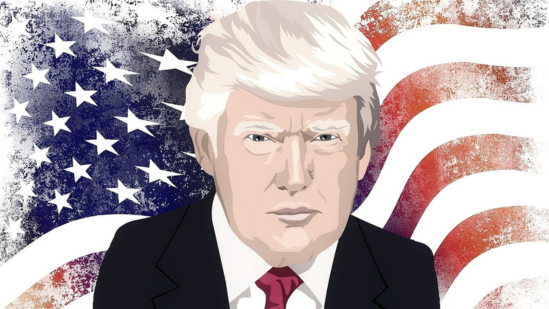Swissquote Bank: Big, fat bill

It’s another day, another record for the S&P 500 and Nasdaq 100, while the Dow Jones hovers just a few points shy of its own all-time high. Small- and mid-cap stocks are also better bid—though still well below their post-election highs.
Remarkably, all this optimism comes despite stronger-than-expected employment data that crushed any near-term hopes of a July Federal Reserve (Fed) rate cut. The odds of such a move dropped from around 27% to just 5% following the data.
The US 2-year Treasury yield—often seen as a proxy for Fed expectations—jumped more than 10 basis points to 3.90%, while the 10-year yield rose above 4.35%. The US dollar rebounded.
If the post-data rally surprised you, you weren’t alone.
Looking under the hood, the data wasn’t quite as impressive as the headline numbers suggested. The US economy added 147,000 nonfarm jobs, but a large portion came from public education—not typically viewed as a barometer of sustained economic momentum. Meanwhile, the unemployment rate unexpectedly fell from 4.2% to 4.1% (vs. expectations of a rise to 4.3%), but this was largely due to around 130,000 workers leaving the labour force.
So while the initial numbers looked robust, the details told a more mixed story.
On the other hand—as flagged earlier this week—the revisions to previous months' data surprised to the upside, and wage growth slowed more than expected. Average hourly earnings declined on both a monthly and yearly basis, marking the slowest pace since last summer—a welcome sign for the Fed in its battle against inflation.
But this time, it's not wage pressures that threaten to reignite US inflation—it's tariffs.
The US-Vietnam trade agreement announced this week includes 20% tariffs on Vietnamese goods and 40% if those goods are transshipped through Vietnam, offering a strong signal that upcoming tariffs won’t hover near the universal 10% mark, they will be higher. These higher tariffs are expected to be inflationary, unless companies choose to absorb the costs—a strategy some may adopt to protect market share, but likely not a sustainable one.
Realistically, trump is redrawing global trade dynamics, and they are likely to add upward pressure on US inflation.
A big, fat bill
In parallel, Trump has just secured passage of his signature $3.3 trillion tax package last night. The bill narrowly passed and is expected to be signed later today—Independence Day—adding political theatre to fiscal policy.
This tax package is projected to push the US national debt past $40 trillion in the coming years, a looming concern for global investors. Should foreign appetite for US debt fade—as the UK’s recent experience has shown—it could raise long-term borrowing costs and put pressure on US Treasuries. That, in turn, could dampen risk appetite and increase the likelihood of a market correction, particularly given current lofty valuations.
While US bond markets are closed today, gold has reclaimed its 50-day moving average this week and is trending higher on the back of trade tensions and debt concerns. US and European equity futures are pointing lower, suggesting the week will end on a cautious note, with investors awaiting the final US tariff announcements—which are unlikely to please.
Whether that matters for risk assets remains to be seen. In recent months, markets have increasingly defied textbook reactions, raising fresh concerns about how sustainable this rally really is.
FX and energy
The US dollar is giving back some of Thursday’s gains amid trade and fiscal uncertainty. The EURUSD is consolidating just below 1.18 and Cable is better bid following confirmation that Rachel Reeves will stay on as Chancellor, easing fears of a more aggressive fiscal push. While the mini-gilt stress was swiftly contained, the 10-year gilt yield remains near levels seen during the Truss-era budget turmoil, and high borrowing costs could constrain UK’s growth prospects, hence limit sterling’s upside.
In Japan, the USDJPY is trading lower after annual wage negotiations concluded with a 5.25% average wage increase—the highest in 34 years. Household spending also jumped significantly last month, reinforcing expectations for a hawkish Bank of Japan (BoJ). The Nikkei is down on tighter policy bets and growing trade concerns with the US.
Elsewhere, US crude is consolidating near the $67 per barrel mark. Bears are back in control this morning following reports that US–Iran nuclear talks are resuming and that OPEC+ is expected to announce a production increase of 411K barrels/day this weekend. While rising supply and softening demand suggest a move back below $65/bbl, the strong support seen this week near that level hints that any downside might take longer to materialize.
